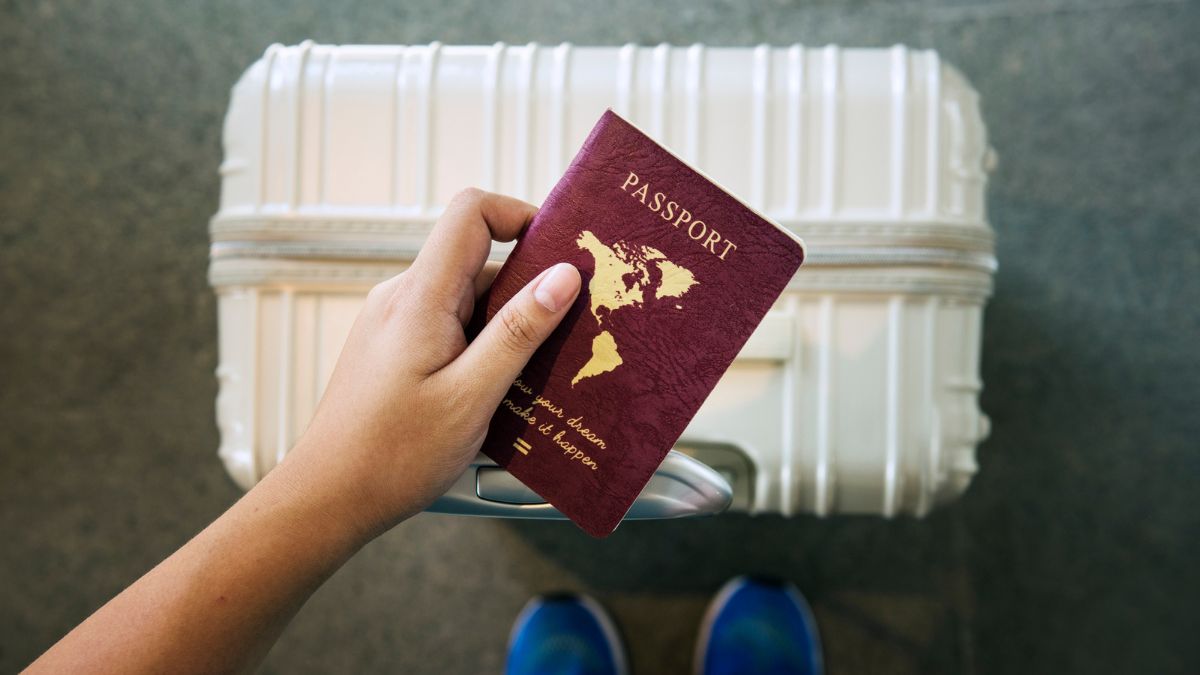What Is A Bio-Data Page In A Passport? Explained

As participants in Amazon Associates and other programs, we earn from qualifying purchases. This comes at no additional cost to you. For more details, see our Affiliate Disclosure.
For many, a passport is simply a ticket to travel the world, a compact booklet of adventure filled with stamps and visas. Yet, nestled within its pages is a critical component that is sometimes overlooked: the bio-data page. This pivotal section carries more weight than just your photo and name; it’s a testament to your identity as a global citizen. In this article, we’ll dive deep into understanding the importance and specifics of the bio-data page in a passport.
HIGHLIGHTS
- The passport bio-data page is a critical section containing the holder’s essential personal details, playing a pivotal role in identification during international travel.
- Located at the front of most passports, the bio-data page is distinguishable due to its unique appearance, often displaying the holder’s photograph and personal details.
- To ensure the integrity and safety of the bio-data page, it’s vital to use protective measures like durable covers, avoid exposure to liquids and magnets, and store in cool, dry places.
- Having a backup, such as a digital scan or photocopy of the bio-data page, can be beneficial in case of loss or damage.
What is the Passport Bio-Data Page?
The passport bio-data page, often referred to simply as the “bio page,” is the page in a passport that contains essential personal details of the holder. This page is designed to serve both identification and verification purposes, especially during international travel.
Details commonly found on the bio-data page include:
- Full Name: The complete legal name of the passport holder.
- Photograph: A standardized, recent photo of the passport holder.
- Passport Number: A unique number assigned to each passport.
- Date of Birth: The birthdate of the passport holder.
- Sex/Gender: The gender of the passport holder.
- Nationality: The citizenship or nationality of the holder.
- Date of Issue: The date on which the passport was issued.
- Date of Expiry: The date on which the passport will expire.
- Place of Birth: The city and country of the holder’s birth.
- Personal Signature: A signature of the passport holder.
Additional details and security features, such as holograms, watermarks, and a machine-readable zone (MRZ) – two lines of alphanumeric characters that can be quickly scanned by machines – are typically present to prevent forgery or tampering.
In recent years, biometric features, like embedded microchips containing digital versions of the data, facial recognition details, and even fingerprints, have been added to many passports to increase security.
The design and specific details found on the bio-data page can vary slightly between countries, but its primary purpose remains the same: to verify the identity of the traveler.
Where is the Passport Bio-Data Page Located?
The passport bio-data page’s location can vary slightly depending on the country that issues the passport, but there are general norms.
In most standard international passports:
- Front Portion: The bio-data page is typically located at the very front of the passport. It is often one of the first few pages, right after any introductory or informational pages that the passport might contain.
- Photograph and Details: On this page, you’ll find the passport holder’s photograph on one side, with the essential personal details listed either below the photo or on the opposite page.
- Endorsements or Notes: The pages that follow the bio-data page often contain endorsements or notes from the issuing authority. These could be about the terms and conditions of the passport or specific instructions for the holder or immigration officials.
- Visa Pages: After the endorsements or notes, the bulk of the remaining pages in the passport are blank and are designed for visas, entry/exit stamps, and other official endorsements.
For those unfamiliar with their passport, the bio-data page is quite easy to locate because of its unique appearance: it will be thicker or have a different texture due to embedded security features, and it will prominently display the holder’s photograph and personal details.
If you have a biometric or e-passport (which contains an electronic chip), the bio-data page might also have a symbol indicating the presence of the chip, often resembling a camera or a rectangle with a centered circle.
To find your passport’s bio-data page, simply open your passport and flip through the first few pages until you find the page with your photograph and personal details.
How to Upload Your Passport Bio-Data Page?
Uploading your passport bio-data page is a straightforward process, but it’s essential to ensure that the information is clear and readable. Whether you’re applying for a visa, opening an international bank account, or verifying your identity for online services, here’s a step-by-step guide on how to do it:
- Prepare the Passport: Ensure that your passport is clean, and the bio-data page is free from any obstructions or marks.
- Take a Clear Photo or Scan:
- Photographing: Place the passport on a flat surface with good lighting. Use a camera or smartphone to take a picture. Ensure there’s no glare, shadow, or distortion. The details and photo should be clearly visible.
- Scanning: If you have a scanner, place the bio-data page face down on the scanner bed and scan it at a high resolution (typically 300 dpi or more). This often provides a clearer image than a photograph.
- Check the Image:
- Ensure that the entire bio-data page is visible, with all corners in the frame.
- Verify that all text is readable, especially the machine-readable zone (MRZ) at the bottom, which consists of two lines of alphanumeric characters.
- Confirm that the colors are accurate, and the image isn’t too dark or light.
- Save the Image:
- Name the file appropriately (e.g., “JohnDoe_Passport_BioData.jpg”).
- Save it in a commonly used format like .JPEG or .PDF, unless specified otherwise by the requesting authority or platform.
- Upload the Image:
- Navigate to the platform or website where you need to upload the image.
- Click on the designated upload button or link, which might be labeled “Upload,” “Attach,” “Choose File,” etc.
- Locate and select the saved image from your computer or device.
- Follow any on-screen instructions to complete the upload. Some platforms may ask you to crop, adjust, or confirm the upload.
- Ensure Privacy: If you’re uploading your passport bio-data page to an online platform, make sure the platform is secure and trustworthy. Your passport contains sensitive personal information, so always be cautious about where and how you share it.
- Backup: It’s always a good idea to have multiple backups of essential documents. Store the digital copy of your bio-data page in a secure location, like an encrypted folder or cloud storage, but ensure it’s also accessible when needed.
- Completion: Once uploaded, some platforms might send a confirmation email or display a confirmation message. Ensure you receive this, as it verifies that the process was successful.
Always remember to double-check requirements if you’re uploading for specific purposes, such as visa applications. Different agencies or platforms might have specific guidelines about file size, format, or resolution.
How to Keep Your Bio-Data Page Safe and Intact?
Keeping the bio-data page of your passport safe and intact is of utmost importance since this page is vital for your identification during international travel and other official verifications. Here are some steps and tips to ensure its safety:
Use a Passport Cover: A durable passport cover can help protect your passport from physical wear and tear, spills, and dirt. Look for covers made of water-resistant materials for added protection.
Avoid Folding or Bending: Never fold your passport or put pressure on it, as this could damage the bio-data page or the embedded electronic chip in e-passports.
Keep Away from Magnets and Electronics: Magnets can potentially damage the electronic chip in modern passports. It’s best to store your passport away from electronic devices and magnetic fields.
Protect from Liquids: Ensure your passport isn’t exposed to any liquids. Even a small amount can cause the ink to smudge or the pages to stick together.
Store in a Cool, Dry Place: Excessive moisture or heat can damage the passport. Avoid leaving it in places like the car’s dashboard or near windows that get direct sunlight.
Limit Exposure to Chemicals: Avoid contact with substances like corrosive lotions, perfumes, or other chemicals that could stain or damage the page.
Handle with Clean Hands: Before handling your passport, ensure your hands are clean and free from any dirt, grease, or lotion.
Check Regularly: Especially during travel, check your passport regularly to ensure it hasn’t been tampered with or damaged.
Use Caution at Borders and Checkpoints: When handing over your passport to officials, observe how they handle it. Ensure it’s returned in the same condition and is not subject to unnecessary rough treatment.
Use RFID Blocking Sleeves: If your passport has an embedded RFID chip, consider using an RFID blocking sleeve or cover. This will not only protect the physical aspects of the bio-data page but will also prevent unauthorized scanning or skimming of your personal information.
Backup: Although this doesn’t protect the physical passport, it’s always a good idea to have a photocopy or digital scan of your bio-data page stored separately. In the unfortunate event of loss or damage, this backup can expedite the replacement process.
Stay Informed: When traveling to unfamiliar places, be aware of common scams or tactics thieves might use to damage or steal passports. Being informed can help you take preventive measures.
Renew in Time: If the bio-data page starts showing signs of wear or damage, consider renewing your passport even if it hasn’t expired yet. An intact and clear bio-data page is essential for smooth travels.
By taking these precautions and being proactive, you can ensure the longevity and integrity of your passport’s bio-data page, making your travels and official processes more hassle-free.






